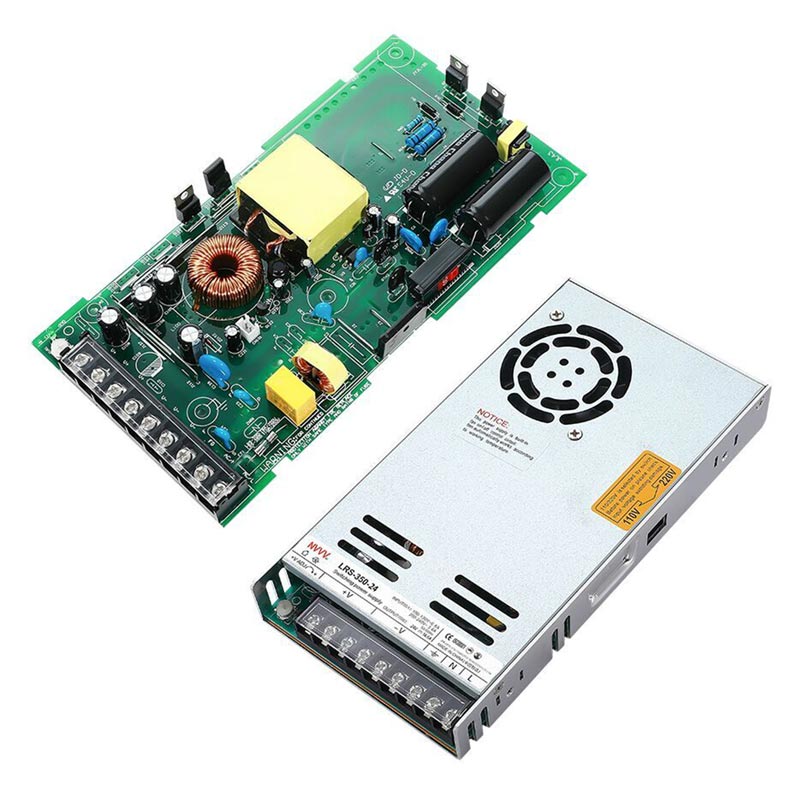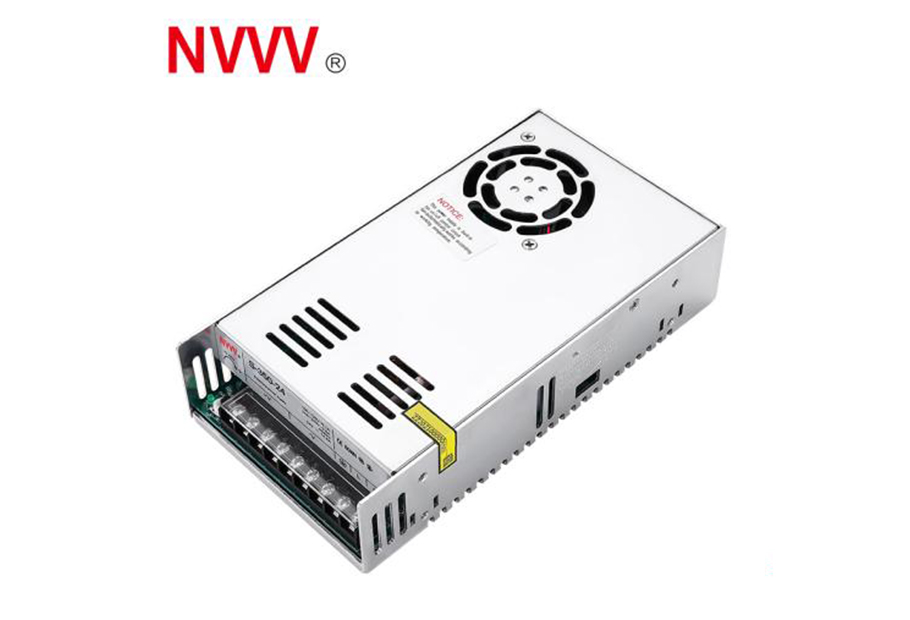In-depth discussion of the important role of SMPS in modern power systems
With the rapid development of science and technology and the advancement of power electronics technology, switched-mode power supply (SMPS) has been widely used in modern power systems and electronic equipment. SMPS is not only popular for its high energy conversion efficiency and small size and light weight, but also because of its seamless integration of power management and control circuits, making it an important tool for electrical engineers. However, SMPS generates harmonics during operation, which poses new challenges to the quality and stability of power systems. Therefore, in order to understand these issues more clearly, in this article, we will discuss in detail what SMPS is, how it generates harmonics, and why SMPS has become the best partner for control panel circuits, hoping to give readers some inspiration.
What is SMPS?
Switched-Mode Power Supply (SMPS) is an electronic power supply device that regulates and stabilizes the output voltage through fast switching actions. Unlike traditional linear power supplies, SMPS uses the fast conduction and shutdown of switching elements (such as transistors or MOSFETs) to control the conversion and transmission of electrical energy. The main structure of SMPS usually includes input rectification and filtering circuit, switching elements, energy storage elements (such as inductors and capacitors), and output rectification and filtering circuit.
What is the working principle of SMPS?
In order to introduce the working principle of SMPS in more detail, I choose to outline it through the following steps:
Input rectification and filtering: The AC input voltage is converted into a pulsating DC voltage through the rectification circuit, and then smoothed into a DC voltage through the filtering circuit.
High-frequency switching: The switching element is quickly turned on and off at a high frequency, regulating the energy accumulation and release in the energy storage element. This process is precisely controlled by the control circuit to ensure the stability of the output voltage.
Energy storage element: Inductors and capacitors store energy during the switching cycle and release or receive energy when the switching element is turned on and off.
Output rectification and filtering: The pulse signal generated by the high-frequency operation of the switching element is converted into a stable DC output through the rectification and filtering circuit.
Advantages of SMPS
High efficiency: Due to the small loss of the switching element during the on and off period, the energy conversion efficiency of SMPS can usually reach more than 80%, and some even exceed 90%. This gives SMPS a significant advantage in energy saving and reducing heat generation.
Small size and light weight: SMPS does not require large transformers and heat sinks, and its compact design makes it very suitable for space-constrained applications.
Wide input voltage range: SMPS can handle a wide range of input voltages and adapt to various power supply conditions, making it widely adaptable worldwide.
Good output stability: SMPS can achieve precise control of output voltage and provide stable power output by adjusting the switching frequency and duty cycle.
Application areas of SMPS
Due to its high efficiency, compactness and reliability, SMPS has been widely used in many fields:
Computer and communication equipment: SMPS provides stable power for computer motherboards, routers, switches and other equipment.
Industrial automation: SMPS provides power support for industrial control equipment such as PLCs, sensors and actuators.
Consumer electronics: SMPS is widely used in equipment such as TVs, audio systems, chargers, etc.
Medical equipment: SMPS provides efficient and stable power for medical monitors, imaging equipment, etc.
How does SMPS generate harmonics?
Although switch mode power supplies (SMPS) play a vital role in modern power systems, their fast switching behavior and nonlinear load characteristics can cause the generation of harmonics. These harmonics not only affect the quality and stability of the power system, but may also cause interference to other electronic devices. Understanding how SMPS generates harmonics is essential for designing and optimizing power electronic devices.
What are harmonics?
Harmonics refer to frequency components that are integer multiples of the fundamental frequency (such as 50Hz or 60Hz) present in the current or voltage waveform. Harmonics in power systems usually exist in the form of current harmonics and voltage harmonics. The fundamental frequency is usually the power frequency of the power supply, such as 50Hz or 60Hz, while harmonics are integer multiples of these fundamental frequencies, such as 100Hz, 150Hz, etc.
Why does SMPS generate harmonics?
Fast switching behavior: SMPS regulates the output voltage by quickly turning on and off switching elements (such as MOSFETs or IGBTs). This high-frequency switching behavior introduces nonlinear components into the input current, resulting in the generation of harmonic currents. The switching frequency is usually between tens of kilohertz and hundreds of kilohertz, and this high-frequency operation introduces high-frequency components into the current waveform.
Nonlinear load characteristics: The rectification and filtering circuits inside the SMPS will shape the input current to make it a pulsating DC. This nonlinear load characteristic will cause the input current waveform to be distorted, further exacerbating the generation of harmonics. In particular, high-order harmonics will be generated during the energy storage and release process of inductors and capacitors.
Parasitic parameters: Parasitic inductance and capacitance in actual circuits will affect the switching process, resulting in additional high-frequency harmonic components. Parasitic parameters will cause parasitic oscillations and spike voltages, which will propagate through the conduction and radiation of the circuit, generating harmonic interference.
Impact of harmonics on power systems
Increased losses: Harmonic currents will increase the losses of transformers, motors, and cables, causing equipment overheating and reduced efficiency.
Voltage waveform distortion: Harmonics will cause voltage waveform distortion in power systems, affecting the normal operation of electrical equipment. For example, voltage distortion can cause misoperation and failure of electronic equipment.
Grid resonance: Harmonics resonate with reactive elements (such as capacitors and inductors) in the grid, which may cause resonant overvoltage and endanger the safe operation of the power system.
Impact on power quality: Harmonics will reduce power quality, affect power supply reliability and equipment life. Power quality problems will lead to abnormal equipment downtime and increased maintenance costs.
Methods for suppressing harmonics
Filters: Adding harmonic filters to the circuit, such as LC filters, active filters, etc., can effectively filter out high-order harmonic components and improve current and voltage waveforms.
Soft switching technology: By adopting soft switching technologies, such as zero voltage switching (ZVS) and zero current switching (ZCS), high-frequency interference and harmonic generation during the switching process can be reduced.
Harmonic suppression technology: The use of multi-phase switching technology, harmonic compensation circuits and other methods can reduce the amplitude and frequency components of harmonics and reduce their impact on the power system.
Reasonable layout and shielding: By optimizing the circuit layout and adopting shielding measures, the influence of parasitic parameters can be reduced and harmonic interference can be reduced.
Why is SMPS the best partner for control panel circuits?
Efficient energy management
Control panel circuits usually need to provide stable power for various sensors, actuators and control units. The high efficiency and wide input voltage range of SMPS enable it to provide stable output under different power supply conditions, which is crucial to ensure the reliability of the control system. For example, in the field of industrial automation, control panels may need to deal with unstable grid voltage and various electrical interferences. The efficient energy conversion capability of SMPS can effectively cope with these challenges.
Compact Design
Control panels are often installed in cabinets or equipment with limited space, so size and weight become key factors in the design. The compact design and light weight of SMPS make it very suitable for such applications. Compared with traditional linear power supplies, SMPS can significantly reduce the size of the power module, leaving more space for other important control and communication equipment.
Low Heat Loss
The components in the control panel are densely distributed, and good heat dissipation design is essential for the long-term stable operation of the system. While SMPS converts electrical energy efficiently, its heat loss is low, which can effectively reduce the heat accumulation inside the control panel. This not only improves the reliability of the power module, but also reduces the need for heat dissipation design.
Electromagnetic Interference (EMI) Control
Although SMPS generates high-frequency switching noise during operation, the impact of EMI on the control panel circuit can be effectively suppressed through reasonable electromagnetic compatibility design and filtering measures. Shielding technology and EMI filters are widely used in modern SMPS designs, allowing it to maintain efficient operation while reducing interference to surrounding circuits.
Flexibility and Customizability
Different applications have different requirements for control panel power. SMPS is highly flexible and customizable, and can be adjusted and optimized according to specific application requirements. For example, different output characteristics and performance requirements can be achieved by adjusting the switching frequency, optimizing the circuit topology, etc. This flexibility enables SMPS to be widely used in control panel circuits in various industrial, commercial and consumer electronics fields.
Conclusion
In summary, the switching power supply (SMPS) plays a vital role in modern power systems and electronic devices. Although SMPS generates harmonics during operation, its efficient energy management, compact design, low heat loss and flexible customization capabilities make it the best choice for control panel circuits. Through reasonable design and optimization, SMPS can not only provide stable and reliable power supply, but also effectively cope with challenges such as harmonics and electromagnetic interference. In the future, with the continuous advancement and innovation of technology, we have reason to believe that SMPS will show its unique advantages and potential in a wider range of applications.









